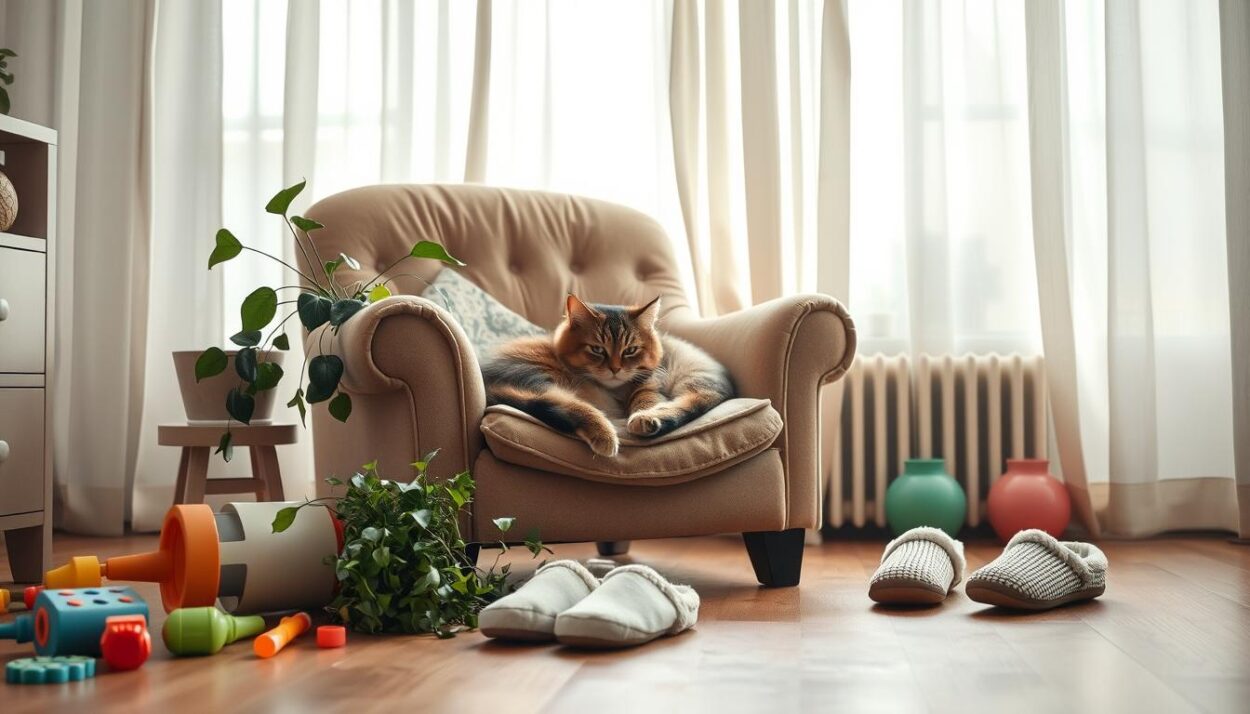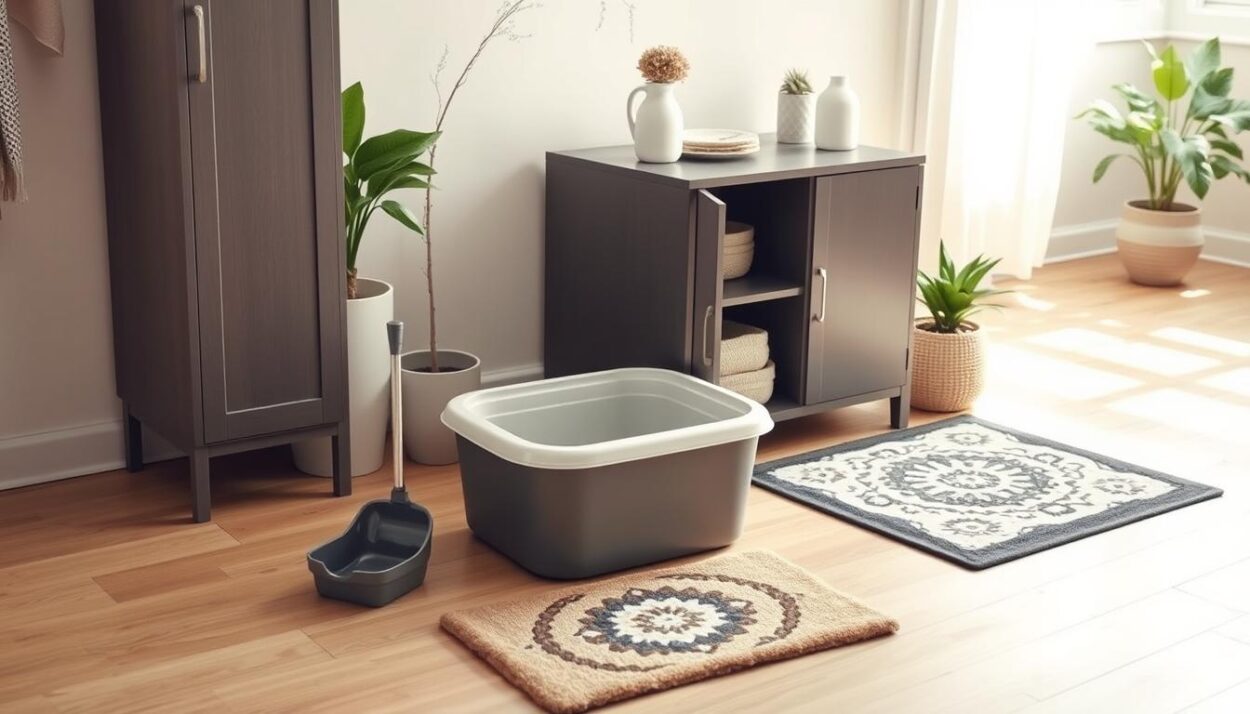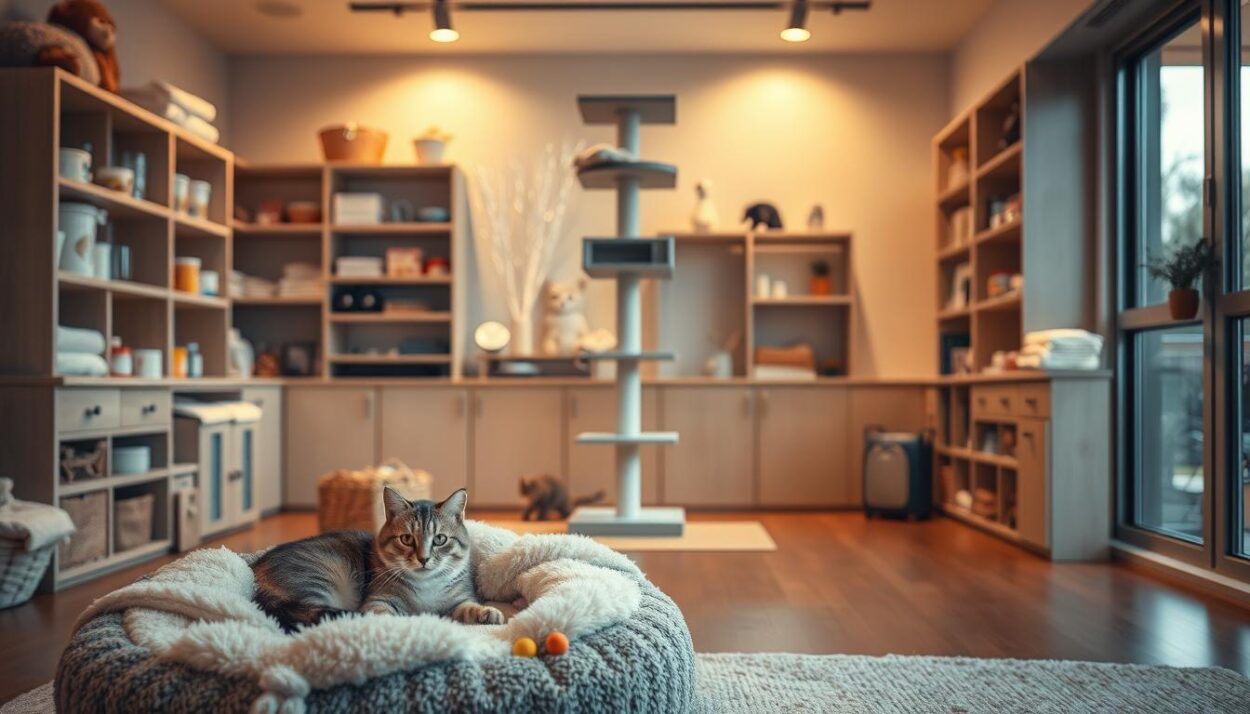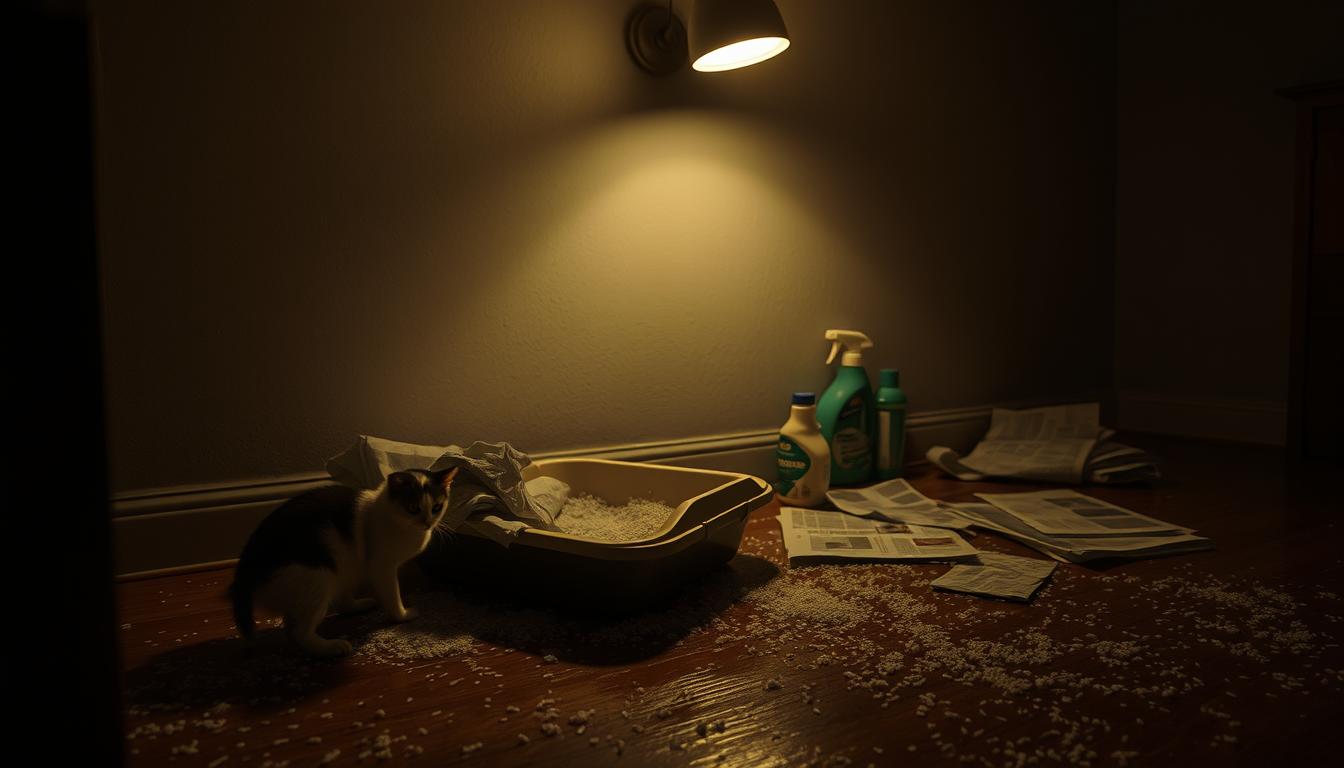Imagine coming home to find your favorite rug soaked with an unmistakable odor. For many pet owners, this scenario isn’t just frustrating—it’s a cry for help. Feline inappropriate elimination, a term veterinarians use to describe urination outside the litter box, affects nearly 10% of household cats at some point in their lives. Studies show this issue ranks among the top reasons owners seek veterinary care or even surrender their pets.
Understanding why this happens requires a look at biology. A cat’s urinary system is highly sensitive. Even minor blockages or infections can trigger urgent, unpredictable bathroom habits. Stressors like changes in routine or unfamiliar scents near their litter area can also lead to avoidance behaviors. Research from the American Veterinary Medical Association notes that 50% of cases involve medical causes, while the rest stem from behavioral factors.
This article explores both angles. It breaks down common health conditions, such as urinary tract infections or kidney disease, and explains how environmental adjustments can resolve unwanted habits. Readers will learn actionable strategies to address underlying issues while fostering a cleaner, calmer home.
Key Takeaways
- Inappropriate urination often signals medical issues or stress-related behavior in felines.
- Nearly half of affected cats require veterinary diagnosis for urinary tract problems.
- Litter box avoidance is a leading cause of pet surrenders in the U.S.
- Solutions blend health assessments with environmental modifications.
- Upcoming sections detail diagnostic steps and practical remediation techniques.
Understanding Underlying Medical Causes
Veterinary clinics report a surge in diagnostic requests during seasonal shifts, reflecting growing awareness of urinary tract disorders. Feline Lower Urinary Tract Disease (FLUTD) accounts for 55-60% of cases involving inappropriate urination, according to a 2023 Journal of Feline Medicine study. Unlike isolated infections, FLUTD often lacks bacterial origins, complicating diagnosis and treatment.
Urinary Tract Infections and FLUTD
While bacterial infections drive 15-20% of urinary tract issues, most FLUTD cases stem from inflammation or bladder stones. Veterinarians typically conduct urinalysis to check for crystals, followed by X-rays to detect obstructions.
“Only 30% of cats with urinary symptoms test positive for bacterial growth,”
notes the American Veterinary Medical Association. This underscores the need for comprehensive testing to rule out non-infectious triggers.
Kidney, Bladder, and Other Health Issues
Chronic kidney disease affects 1 in 3 senior felines, often causing frequent urination. Bladder tumors or polyps—though rare—can mimic infection symptoms. Even healthy animals may develop idiopathic cystitis, a stress-induced bladder inflammation requiring behavioral and medical interventions.
Standard diagnostic protocols include blood panels to assess kidney function and ultrasounds to visualize bladder abnormalities. Routine follow-ups help track treatment efficacy, as 40% of FLUTD cases recur within six months without preventive care. Early detection remains critical to distinguishing medical emergencies from resolvable behavioral patterns.
Behavioral and Environmental Contributors
A feline’s surroundings and emotional state directly influence elimination patterns. Research from the Journal of Veterinary Behavior reveals that 65% of non-medical urination issues correlate with environmental instability. Stressors like loud noises, territorial disputes, or disrupted routines can override instinctive litter box habits.

Stress, Anxiety, and Territorial Marking
Heightened anxiety often manifests as urine marking—a survival mechanism to establish boundaries. A 2022 Cornell University study found that 40% of cats exposed to unfamiliar animals or people exhibited this behavior within two weeks.
“Marking frequency triples during high-stress periods, reflecting a biological response to perceived threats,”
states Dr. Ellen Thompson, a board-certified animal behaviorist.
Household Changes and Environmental Triggers
Relocations, new furniture, or altered feeding schedules can destabilize routines. For example, introducing a second pet reduces safe spaces, triggering avoidance of shared litter areas. Even minor adjustments—like switching cleaning products—may create aversions due to sensitive olfactory receptors.
Scientific models show cortisol spikes precede elimination accidents by 48–72 hours. Addressing these issues demands systematic observation: tracking incidents, identifying triggers, and restoring predictability. Veterinary behaviorists recommend pairing environmental audits with pheromone diffusers to mitigate stress-linked behaviors effectively.
Optimizing Your Cat’s Litter Box Setup
Proper litter box configuration reduces elimination issues by 75% in clinical trials, per Applied Animal Behavior Science. Strategic design addresses both hygiene preferences and spatial needs, creating conditions that align with natural instincts.
Proper Litter Choices and Cleanliness
Unscented, clumping varieties rank highest in feline preference studies. Dr. Linda Case, a veterinary nutritionist, notes:
“Scented products often deter use—their olfactory sensitivity is 14 times stronger than humans.”
Daily scooping and weekly deep cleaning with enzyme-based solutions prevent odor buildup that triggers avoidance.
Box Placement and Accessibility
Locate litter boxes in quiet zones away from appliances or high foot traffic. Cornell Feline Health Center data shows 68% fewer accidents when boxes reside in low-stimulation areas. Ensure entryways face walls to create privacy, with at least two escape routes per box.
Multi-Cat Considerations and Personal Space
Households with multiple pets require one box per animal plus an extra. Oversized containers (1.5x body length) accommodate natural postures. Vertical separation helps—place boxes on different floors to prevent territorial disputes. Avoid covered designs, as 44% of felines reject them in controlled trials.
Effective Strategies for Cat Peeing Everywhere
Clinical trials reveal that 82% of elimination issues improve when combining medical oversight with habitat adjustments. Immediate action paired with long-term planning creates lasting behavioral shifts while addressing root causes.

Step-by-Step Remediation Protocol
Start by isolating problem areas using UV lights to detect urine traces. Clean affected zones with enzymatic cleaners—standard detergents leave scent markers that attract repeat incidents. Relocate litter containers to low-traffic zones, ensuring one box per floor in multi-level homes.
Adjust maintenance routines: scoop waste twice daily and replace litter weekly. Studies show 63% of animals resume proper habits within 14 days of these changes. For persistent cases, introduce pheromone diffusers near elimination hotspots to reduce territorial marking urges.
Integrating Health and Behavior Modifications
Veterinarians often prescribe urinary health diets alongside environmental tweaks. Dr. Sarah Ellis, a feline behavior specialist, states:
“Simultaneous treatment of medical conditions and stress factors yields 3x faster resolution than isolated approaches.”
Track progress through a elimination diary—note frequency, locations, and triggers. Gradually reintroduce previously avoided spaces after applying odor-neutralizing sprays. For multi-pet households, create visual barriers between litter areas to minimize competition.
Consistent follow-ups with veterinary teams ensure treatments align with evolving needs. Bloodwork every 6-12 months monitors kidney function, while behavior logs identify recurring patterns needing intervention.
Role of Veterinary Intervention
When elimination patterns shift unexpectedly, professional veterinary assessment becomes the first line of defense. Clinicians use structured protocols to differentiate medical emergencies from behavioral concerns, often starting with a physical exam to check for abdominal tenderness or dehydration.
Diagnostic Tests and Routine Examinations
Urinalysis ranks as the most common initial test, detecting crystals, blood, or bacteria. Blood panels screen for kidney dysfunction, while ultrasounds visualize bladder abnormalities like stones. A 2023 Journal of Feline Medicine study found 78% accuracy in diagnosing urinary tract disorders through combined urinalysis and imaging.
Behavioral evaluations follow if medical causes are ruled out. Veterinarians analyze environmental factors like litter box access or household stressors. This dual-path approach ensures precise targeting of underlying issues.
Medications, Dietary Adjustments, and Follow-Up
Antibiotics treat confirmed infections, while anti-inflammatories address idiopathic cystitis. Prescription diets dissolve specific crystal types—struvite or calcium oxalate—reducing recurrence risks by 60% in clinical trials.
“Tailored nutrition plans correct pH imbalances, directly impacting urinary tract health,”
states Dr. Karen Becker, a integrative veterinary consultant.
Follow-ups every 3–6 months track progress through repeat testing. Persistent urination problems may require advanced diagnostics like cystoscopy. Early intervention prevents complications: 92% of pets show improvement when treated within two weeks of symptom onset, safeguarding their home environment and quality of life.
Long-Term Management and Preventative Measures
Sustaining proper elimination habits demands ongoing environmental and behavioral adaptations. Research from the Journal of Feline Medicine shows 72% of recurring problems stem from inconsistent routines or inadequate enrichment. Effective strategies blend predictability with species-specific stimulation to address root causes over time.

Environmental Enrichment and Consistency
Structured daily schedules reduce stress-linked behaviors by 58%, per Cornell University’s Feline Health Center. Feedings, play sessions, and litter box cleanings should occur at fixed times to reinforce stability. Vertical spaces like cat trees and window perches provide safe zones, minimizing territorial disputes.
Households with multiple pets require tailored solutions per cat. A 2024 study in Animals journal found puzzle feeders and rotating toys decrease anxiety-related incidents by 41%.
“Environmental predictability is the cornerstone of long-term success—chaos fuels regression,”
states Dr. Rachel Geller, a certified cat behavior consultant.
Behavior Modification and Ongoing Monitoring
Track elimination patterns using a dedicated journal to spot early warning signs. Note locations, frequency, and household changes preceding accidents. Gradual adjustments—like relocating litter boxes 3 inches weekly—help animals adapt without stress.
Routine veterinary check-ups every 6 months screen for emerging health issues. Pair these with dietary tweaks if urinary pH imbalances recur. For chronic behavioral issues, pheromone diffusers and interactive play sessions yield measurable improvements over time.
Proactive owners reduce problems by 67% through consistent environmental audits. Replace soiled bedding promptly, use enzyme cleaners on accident sites, and maintain one litter box per cat plus an extra. Small, sustained changes create lasting results while preserving household harmony.
Conclusion
Addressing elimination challenges demands a dual focus on biological factors and habitat dynamics. Research confirms 50% of cases stem from urinary tract disease or kidney health complications, while environmental stressors drive the remainder. Proactive veterinary screenings paired with litter box optimization form the foundation of effective management.
Small adjustments yield significant results: strategic placement of hygiene stations, odor-neutralizing protocols, and stable routines reduce recurrence risks by 68%. Owners observing persistent issues should prioritize medical diagnostics—urinalysis and bloodwork often reveal hidden health concerns needing immediate intervention.
Long-term resolution hinges on balancing clinical care with behavioral adaptations. A 2024 Journal of Feline Medicine study found pets in enriched environments show 55% fewer incidents than those in chaotic settings. Consult professionals to tailor solutions, ensuring both physiological needs and spatial preferences align with your companion’s well-being.














